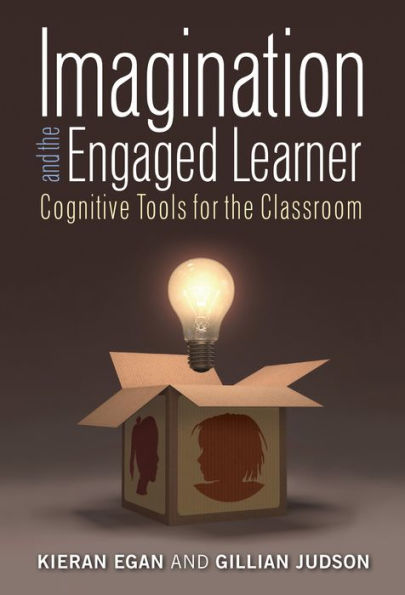Students’ imaginations are often considered as something that might be engaged after the hard work of learning has been done. Countering such beliefs, Egan and Judson show that the imagination—one of the great workhorses of learning—can be used to make all learning and all teaching more effective. Through techniques that any teacher can learn and easily apply in any classroom, they demonstrate how and why imagination can be used across the curriculum and grade levels to make teaching and learning more interesting, engaging, and pleasurable for all. Teachers who use these techniques will discover the emotions, images, stories, metaphors, sense of wonder, heroic narratives, and other cognitive tools that can bring life and energy to their classroom. This practical handbook will help teachers learn how to use these enlivening techniques in their daily practice to stimulate students’ intellectual activity and growth.
Book Features:
- A comprehensive description of imagination’s role in thinking and learning.
- Field-tested teaching strategies for the K–12 classroom.
- Cross-curricular examples showing IE making a real difference for teachers and students.
- A “cognitive toolkit” to spur active learning and meaningful interaction.
“What fun! Readers will get a host of practical ideas to make lessons come alive through the exercise of imagination, the use of metaphors, and the telling of stories. Read and enjoy.”
—Nel Noddings, Lee Jacks Professor of Education Emerita, Stanford University
Students’ imaginations are often considered as something that might be engaged after the hard work of learning has been done. Countering such beliefs, Egan and Judson show that the imagination—one of the great workhorses of learning—can be used to make all learning and all teaching more effective. Through techniques that any teacher can learn and easily apply in any classroom, they demonstrate how and why imagination can be used across the curriculum and grade levels to make teaching and learning more interesting, engaging, and pleasurable for all. Teachers who use these techniques will discover the emotions, images, stories, metaphors, sense of wonder, heroic narratives, and other cognitive tools that can bring life and energy to their classroom. This practical handbook will help teachers learn how to use these enlivening techniques in their daily practice to stimulate students’ intellectual activity and growth.
Book Features:
- A comprehensive description of imagination’s role in thinking and learning.
- Field-tested teaching strategies for the K–12 classroom.
- Cross-curricular examples showing IE making a real difference for teachers and students.
- A “cognitive toolkit” to spur active learning and meaningful interaction.
“What fun! Readers will get a host of practical ideas to make lessons come alive through the exercise of imagination, the use of metaphors, and the telling of stories. Read and enjoy.”
—Nel Noddings, Lee Jacks Professor of Education Emerita, Stanford University

Imagination and the Engaged Learner: Cognitive Tools for the Classroom

Imagination and the Engaged Learner: Cognitive Tools for the Classroom

Product Details
| ISBN-13: | 9780807774595 |
|---|---|
| Publisher: | Teachers College Press |
| Publication date: | 01/03/2016 |
| Sold by: | Barnes & Noble |
| Format: | eBook |
| File size: | 1 MB |
